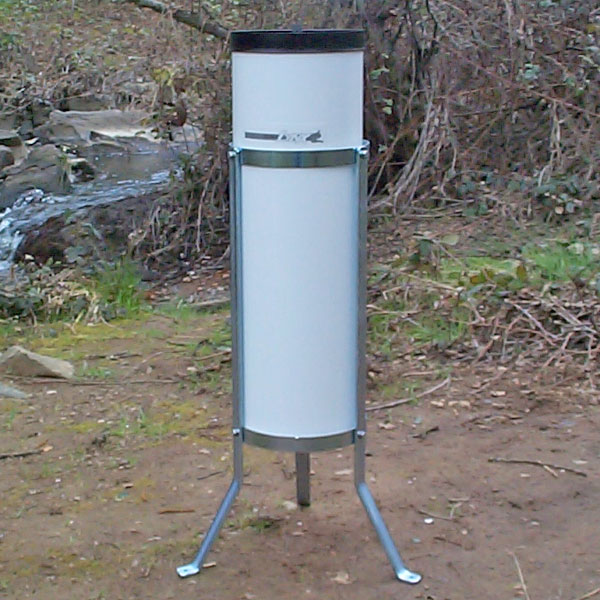How a Rain Gauge Can Boost Your Comprehending of Local Climate Patterns
How a Rain Gauge Can Boost Your Comprehending of Local Climate Patterns
Blog Article
Revealing the Science Behind Rainfall Determines: Just How These Gadgets Play a Critical Duty in Climate Research and Ecological Tracking
Rain assesses, seemingly simple tools, hold a profound relevance in the world of climate research and environmental tracking. These humble tools silently collect among nature's most necessary elements-- rainfall. Behind their unpretentious facade exists a complicated scientific research that is indispensable for comprehending the characteristics of our atmosphere. As we peel off back the layers of this clinical veil surrounding rainfall evaluates, we reveal a world where accuracy, information precision, and meticulous observation merge to unveil a deeper understanding of our altering climate and its effect on the world.
Significance of Rainfall Gauges
Rain assesses play a vital role in surveillance and measuring rainfall levels, providing necessary information for climate research study and evaluation. These tools are essential in evaluating the amount of rainfall that happens in a details area over a specific period. By accumulating and determining rainwater, rainfall determines offer valuable insights into the circulation and intensity of precipitation, helping meteorologists, hydrologists, and climatologists in recognizing weather condition patterns and patterns.
Additionally, long-term data accumulated from rain gauges aids in evaluating environment change effects and patterns, contributing significantly to clinical study and decision-making procedures. In significance, rain assesses serve as crucial devices in the field of weather forecasting and ecological scientific research, playing a vital function in progressing our understanding of weather and environment characteristics.
Sorts Of Rain Gauges

Capability and Operation
In the world of climate research study and meteorological research studies, the effectiveness of rainfall determines lies in their detailed functionality and accurate functional devices. Rainfall assesses are designed to precisely determine the quantity of precipitation that falls over a particular area during a collection period.
The functionality of rain determines is based upon the principle of gathering and measuring rainwater in a standard way. This gathered data is important for understanding neighborhood climate patterns, tracking lasting environment trends, and analyzing ecological influences. To guarantee precise measurements, rain evaluates need to be strategically put in open locations far from blockages such as buildings or trees that could interfere with the collection procedure.
The functional facet of rain assesses check involves normal maintenance to avoid debris build-up, calibration checks to preserve dimension accuracy, and information tape-recording for evaluation (rain gauge). Overall, the functionality and operation of best site rain gauges are necessary for gathering dependable rainfall data vital to climate research study and ecological surveillance
Duty in Environment Study
Offered the important importance of exact rainfall measurements in understanding weather patterns and environmental influences, the role of rainfall gauges in climate study is crucial. Rainfall evaluates offer vital information for environment research study by quantifying the amount of precipitation that tips over a details location during a given duration. This data is vital for keeping an eye on lasting patterns in precipitation patterns, evaluating the influence of climate adjustment on rains circulation, and enhancing climate versions.

Environment scientists make use of data gathered from rain evaluates to evaluate variants in rainfall levels, determine local environment patterns, and examine the performance of water resource monitoring strategies. By comparing historic rainfall data with existing measurements, researchers can discover shifts in rainfall patterns, such as modifications in the frequency or intensity of rainfall events. This information is essential for comprehending how climate adjustment is affecting rainfall dynamics and can aid policymakers make educated decisions relating to adaptation and reduction techniques.
Applications in Environmental Monitoring

In flood forecasting, rainfall gauge data helps to track rainfall intensity and circulation, permitting authorities to provide prompt warnings and take required measures to mitigate flooding threats (rain gauge). Drought tracking depends on rainfall gauge data to examine moisture degrees in the dirt and track precipitation deficiencies, aiding in the recognition of drought-prone locations and the application of dry spell action strategies
In addition, rain gauge information plays a vital function in water source monitoring by offering information on water schedule and use trends. This data is used to make educated decisions regarding water allowance, preservation steps, and sustainable water resource preparation. Additionally, in farming, rain gauge data assists farmers in enhancing irrigation schedules, plant selection, and overall farm administration practices click to read based on neighborhood rainfall patterns. In general, rain determines are crucial devices in environmental tracking, offering beneficial insights that contribute to notified decision-making and sustainable resource administration.
Verdict
Finally, rainfall determines are essential tools for determining rainfall, offering important information for climate study and environmental surveillance. With various types and functionalities, rainfall gauges play a crucial duty in recognizing rainfall patterns and their impact on the environment. By properly gauging rains, these devices add to the improvement of clinical understanding and aid in making informed choices associated to water resource administration and calamity readiness.
Rain gauges play an important role in monitoring and determining rainfall levels, supplying necessary information for climate research and evaluation. The common rain scale, known as the "tipping pail" scale, is one of the most generally utilized tools. Ultrasonic rain evaluates use noise waves to detect the presence of rain, offering real-time information on rainfall degrees.Climate researchers utilize information accumulated from rain determines to analyze variants in rainfall levels, recognize regional climate patterns, and review the performance of water source monitoring methods.In final thought, rain gauges are essential devices for measuring rainfall, supplying useful data for climate research and ecological tracking.
Report this page